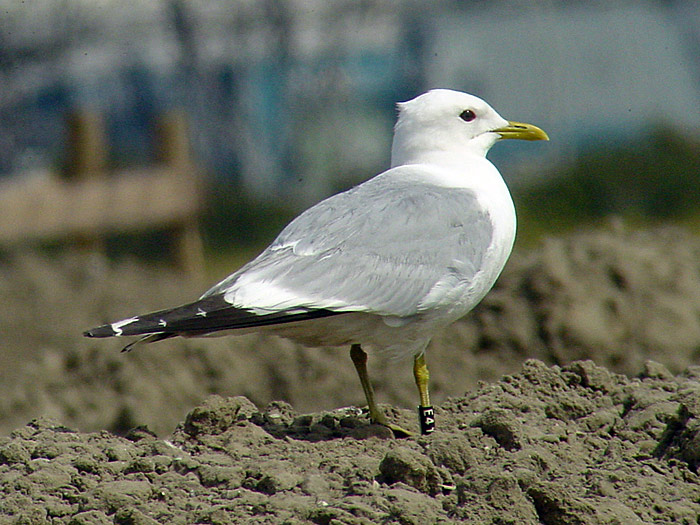 Mew Gull Larus canus canus; heinei; kamtschatschensis; brachyrhynchus
Mew Gull Larus canus canus; heinei; kamtschatschensis; brachyrhynchus
(last update: March 12, 2012)
Mew Gull canus E419 adult, June 22 2003, Dintelhaven, Maasvlakte, the Netherlands.
An individual at the start of the complete moult. The tertials and inner wing-coverts are very worn by mid-summer. From early summer to October, a complete moult will bring birds in so-called "adult winter" plumage. The head is still white but the new head feathers will show streaks or spots, most densely in the hind-neck and the bill will show a (faint) bill-band. The under-parts, tail-coverts and rump will stay white. The upper-parts are medium grey, with broad white fringes on the tertials. The adult primaries have a clear-cut black triangle on the outer-wing. Black sub-terminal markings run down to P6 or P5. From P1-P9 the primaries show extensive white tips and the two mirrors on P9 and P10 are obvious (there may even be a small mirror on P8). The iris is brown in nominate canus, the bill is yellowish with a faint black bill-band and the legs are yellowish, greenish or greyish, often with a flesh-cloured hue.
In adult winter, brachyrhynchus develops only diffuse head streaking, creating a diffuse grey head and no dark bill-band, whereas canus often has the head strongly mottled or streaked and often develops a full bill-band in winter. Furthermore, the iris in brachyrhynchus is paler, sometimes clear yellow. Adult brachyrhychus normally have a black sub-terminal band on P5-P10. Between this black band and the grey centre, a large white spot is visible both from above and below on P5-P7, creating a string of pearls on these primaries. P9 and P10 show large white mirrors.
